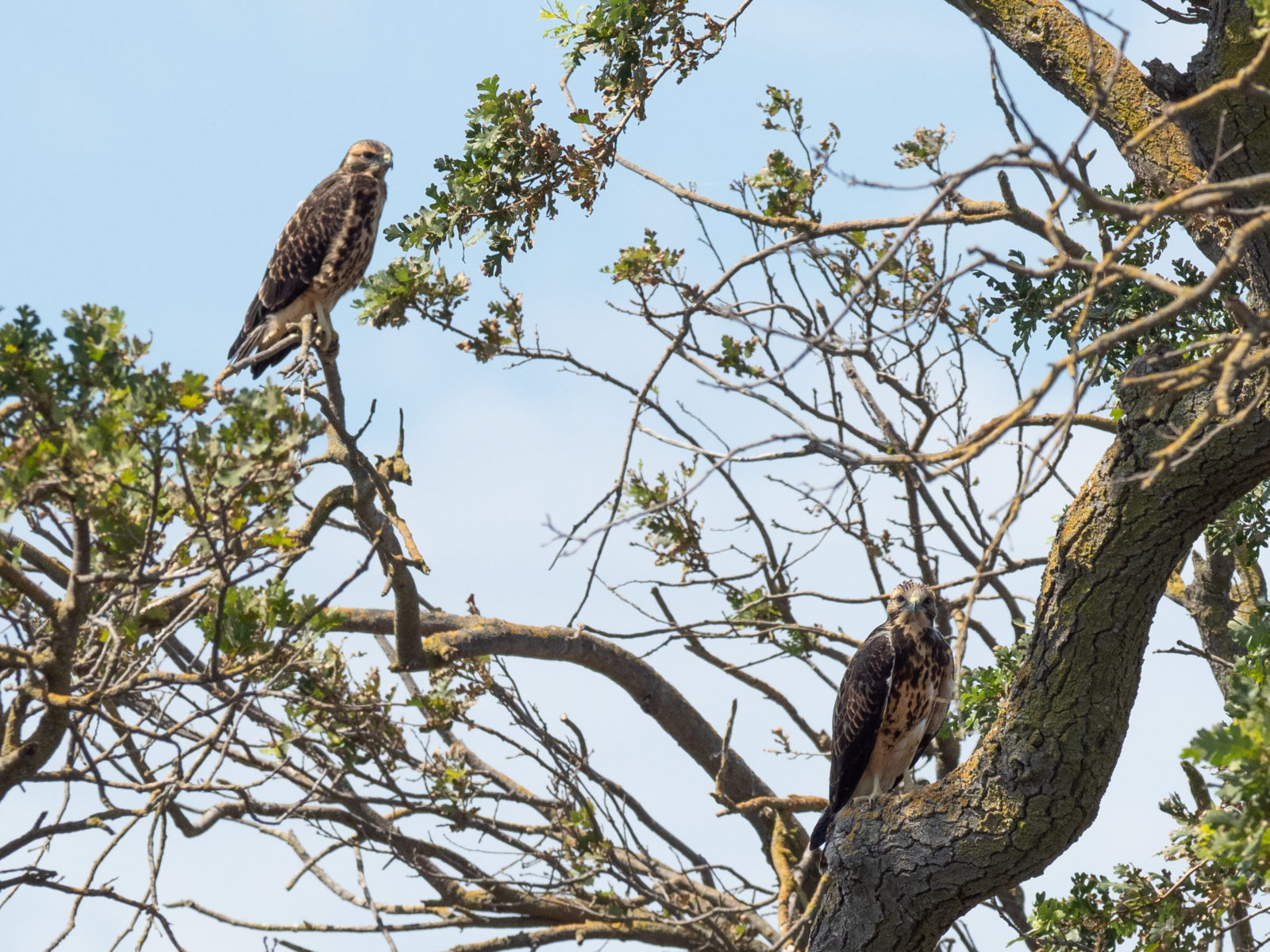To the south of the levee’s U shape, canals tangle toward the sprawling Sacramento–San Joaquin River Delta, which teems with wildlife. North of the levee, former farmland slowly sinks, exhausted by generations of human intervention.
Historically, the Delta’s freshwater wetlands stretched for nearly 750 square miles of flood basins, islands, and channels weaving through a landscape constantly transformed by seasonal and daily floods. But as humans engineered the Delta for agriculture and urban development, they built hundreds of miles of levees to cut off the wetlands from floodwaters, splitting the fertile expanse into dry, tidy parcels. Between the 1800s and the early 2000s, wetland areas in the Delta shrank by 98 percent.
“We disconnected the land from the water by building big levees,” says Charlotte Biggs, program manager with the California Department of Water Resources. “We’ve eliminated wetland areas for both the small fish that need them as their natural habitat and migrating fish that are coming through the system to spawn.”

But this divided landscape is poised to change dramatically. Lookout Slough, 3,000 acres of former farmland, ranchland, and duck hunting grounds north and west of the Yolo Bypass West Levee, is slated to become the largest tidal wetland restoration project in the history of California.
The restoration of Lookout Slough will involve digging over 20 miles of new tidal channels, landscaping and revegetation, and constructing a new setback levee along the northern edge of the property. The new levee will be three miles long and 25 feet tall, made out of compacted earth and designed to withstand a 100 year flood and handle sea level rise due to climate change. Once construction is complete, the old levee will be breached to allow Lookout Slough to flood with the tides once again.

The project is a partnership between the California Department of Water Resources and Ecosystem Investment Partners (EIP), a restoration company. This collaboration propelled the project through early planning to construction within five years, faster than the typical pace of large-scale state endeavors. As a private company, EIP was able to quickly purchase the private properties that now make up Lookout Slough, as well as efficiently manage different phases of construction.
“What makes Lookout Slough special is that the project is the first of its kind,” says Biggs. “It’s being used by the exact species that we are creating more habitat for. And it was really delivered through a public–private partnership, which I think is something we need to do more of in this field as a way to do more conservation and achieve our goals.”

In the Delta, the Sacramento and San Joaquin rivers come together in a network of tidal wetlands and tributaries that eventually drain into the San Francisco Bay. It is home to the endangered delta smelt , migrating salmon and sturgeon, giant garter snakes, western pond turtles, and various raptors and water fowl. This menagerie relies on the unique habitats created by tides overflowing the meandering rivers that define the landscape.
“Floodplains were really the food factories for fish as well as other native wildlife, flora and fauna, so we want to restore all of those natural processes,” says Stephanie Freed, Lookout Slough project manager and assistant director of operations at EIP.

Flood Control
The vast floodplain of the Sacramento Valley is prone to potentially catastrophic flooding. Sacramento, Davis, and other towns and farm operations throughout the region are currently kept dry by an elaborate system of levees, canals, and overflow channels, such as the Yolo Bypass, which passes by Lookout Slough on its way into the Delta.
“That land all used to flood, including the city of Sacramento,” says Adam Davis, managing partner at EIP. “So people built the bypasses and the levees to protect cities and farms from flooding. But that also cut off the land from water and from natural ecological processes.”
The Delta also supplies freshwater for 25 million people and 3 million acres of farmland. These critical uses rely on precarious infrastructure, including more than 1,000 miles of levees, many of which are at risk of failure from sea level rise, earthquakes, and lack of maintenance.

With Lookout Slough restored, the expanded floodplain will increase wildlife habitat and divert flood waters away from nearby towns and infrastructure.
“We’re not just doing a project for environmental purposes or to benefit the smelt, we’re also providing additional flood-risk reduction for the area,” says Biggs. “We need to both protect the cities and the people that live in the Delta or make their living in the Delta at the same time that we are doing projects that benefit the environment.”
The project was funded by the State Water Project, State Water Contractors, and Proposition 1E, the Disaster Preparedness and Flood Protection Bond Act of 2006. Proposition 1E allocates more than $4 billion in state funds to repair and rebuild California’s most vulnerable flood-control structures, with the goal of protecting lives and property from disasters such as levee failures and flash floods. The total cost of the Lookout Slough project is an estimated $118,865,000.
A Slew of Sloughs
Lookout Slough is named after a humble irrigation ditch with a 90-degree turn, one of many unnaturally shaped canals dividing former farmland in severe straight lines. But the term “slough” usually refers to a natural creek within a wetland or tidal flat, or an inlet on a river. Sloughs snake through marshland and provide a haven for fish and birds within a rich and dynamic ecosystem transformed by the daily push and pull of the tides.
“The tide is really the same as at the Golden Gate Bridge — it goes all the way up into the Delta, up to seven feet twice a day, even 70 miles inland,” says Davis.
Abundant riparian plants create ideal habitats for salmon, sturgeon, and other fish to feed and take refuge as they migrate upstream on their way to spawn. In addition to fish, the Delta is home to ospreys and swainson hawks, and is a popular pitstop for migrating birds. In the spring, approximately 65 million birds from more than 80 different species migrate through the Central Valley.
Native two-foot-long giant garter snakes, which require both aquatic and terrestrial habitats, will also benefit from the restoration. Giant garter snakes live along the margins of tidal marshes, and the fringes of Lookout Slough behind the new levee will be specifically protected as snake habitat.

Once restored, Lookout Slough will encompass 20 miles of sinuous, wide channels full of tule reeds and bordered by newly planted trees including oak, walnut, ash, and valley elderberry, which will create habitat for the threatened valley elderberry longhorn beetle. There will be no trails or other human land use, in order to protect wildlife habitat. However, there will be a boat ramp and opportunities for water-based recreation such as kayaking and fishing.
Construction of Lookout Slough’s new levee began in June 2022, with completion of the project planned for 2024. The restoration will culminate in the breaching of the old levee, unleashing the Delta and returning Lookout Slough to the tides.
“It will be an enormous joy to see the tide come back onto the land,” says Davis.
